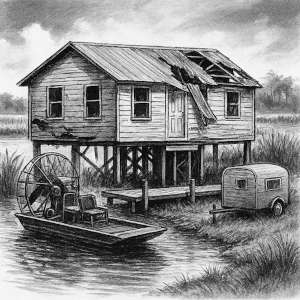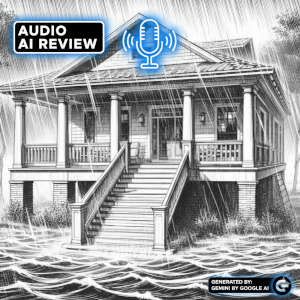AI Resources
Month 2 - Advocacy Strategy for Reimbursement After a Forced Mortgage Payoff
Homeowners seeking reimbursement through HUD’s Community Development Block Grant–Disaster Recovery (CDBG-DR) program for insurance funds used in a Forced Mortgage Payoff (FMP) must center their argument on one critical principle: lack of legal control over the insurance proceeds.
By Murray Wennerlund, published , updated .
Key Policy Foundation: Legal Control Determines DOB
Although CDBG-DR funds cannot be used to pay off a mortgage, HUD has longstanding guidance that permits homeowners to receive reconstruction assistance when insurance proceeds were involuntarily applied to the mortgage. In such cases, the payout is not considered a Duplication of Benefits (DOB) because the homeowner had no legal control over the funds.
CDBG-DR assistance is designed to address unmet housing needs, needs that would have been covered by the insurance payout had it been available to the homeowner. In cases of substantial damage or condemnation, mortgage holders often apply insurance proceeds to the loan balance to protect their financial interest, leaving homeowners without sufficient funds to rebuild.
To overcome state-level misclassifications of DOB, homeowners must cite federal HUD policy and demonstrate lack of control.
I. The Core Policy: Lack of Legal Control Over Funds
The homeowner's legal position is clear: insurance proceeds used to pay off the mortgage were not available for discretionary use, and therefore do not constitute a DOB that would reduce CDBG-DR eligibility.
- HUD Guidance on Legal Control
-
HUD guidance dated June 20, 2019 (Docket No. FR-6169-N-01) states:
"Funds are not available to an applicant if they do not have legal control over the funds at the time they are received." - When a mortgage requires insurance proceeds—such as NFIP funds—to be applied to the unpaid principal, the lender, not the homeowner, controls the funds.
- The homeowner is legally obligated to apply the proceeds to the mortgage and cannot use them for repairs.
- Under these conditions, the insurance payout does not reduce CDBG-DR eligibility and is excluded from DOB calculations.
- Situations Constituting Lack of Control
- Once the homeowner signs the two-party insurance check and sends it to the servicer, they relinquish all legal control.
- Mortgage instruments typically state that insurance proceeds may only be used for restoration if repairs are economically feasible and the lender's security is not lessened.
- If reconstruction costs exceed the payout—e.g., $300,000 in repairs vs. $150,000 in insurance—the lender may deem restoration infeasible and apply the funds to the debt.
- This action protects the lender from default risk or what may be internally labeled as a "Risk of Ownership Change."
When a home is declared substantially damaged, the lender's security interest is impaired—triggering the FMP clause in the mortgage contract.
II. Required Documentation and Advocacy Steps
Despite HUD's clear guidance, many state-administered CDBG-DR programs impose outdated or inconsistent requirements. Homeowners must be prepared to advocate and appeal.
1. Challenging the Outdated State Requirement
Some states still rely on a 2011 FEMA policy requiring a letter from the lender—on company letterhead—explicitly stating the payoff was required and not optional.
- Homeowners should challenge this by citing the 2019 HUD guidance, which supersedes FEMA's outdated policy.
- Major lenders (e.g., US Bank, Wells Fargo, Chase, Quicken Loans) routinely refuse to issue such letters.
- If a standard payoff letter is provided—even without the word "forced"—it may still serve as evidence that the NFIP proceeds were applied in full to the mortgage, not retained for repairs.
2. Actions for Appeal and Dispute
To challenge a DOB classification and seek reimbursement:
-
Submit a Formal Appeal for Reimbursement
Request that NFIP proceeds involuntarily applied to the mortgage be excluded from DOB calculations. -
Request an Exceptions Panel Review
Ask your state's disaster recovery unit to review the case under its Exceptions Panel process. -
Cite Specific HUD Guidance
Reference Docket No. FR-6169-N-01 and the legal control standard. -
Provide an Affidavit
Submit a sworn statement detailing when and how control of the insurance funds was lost. -
Engage State Management and Legal Teams
Send written communications to CDBG-DR program managers and legal counsel, highlighting the conflict between state practice and HUD policy.
3. Reporting Mismanagement
If the state refuses to comply with HUD guidance:
-
File a Complaint with HUD OIG
Report the issue to the HUD Office of Inspector General, citing failure to follow federal policy. -
Focus of the Report
Emphasize how the state's reliance on FEMA policy within HUD programs causes financial harm and obstructs recovery—potentially contributing to housing instability or homelessness.
III. Strategic Position
The advocacy goal is to ensure insurance proceeds are recognized as having been used to remove the lien on the property—making reconstruction possible. Homeowners should act as persistent advocates, and when possible, organize with others facing the same issue. A unified voice strengthens the case for fair treatment under federal recovery law.

